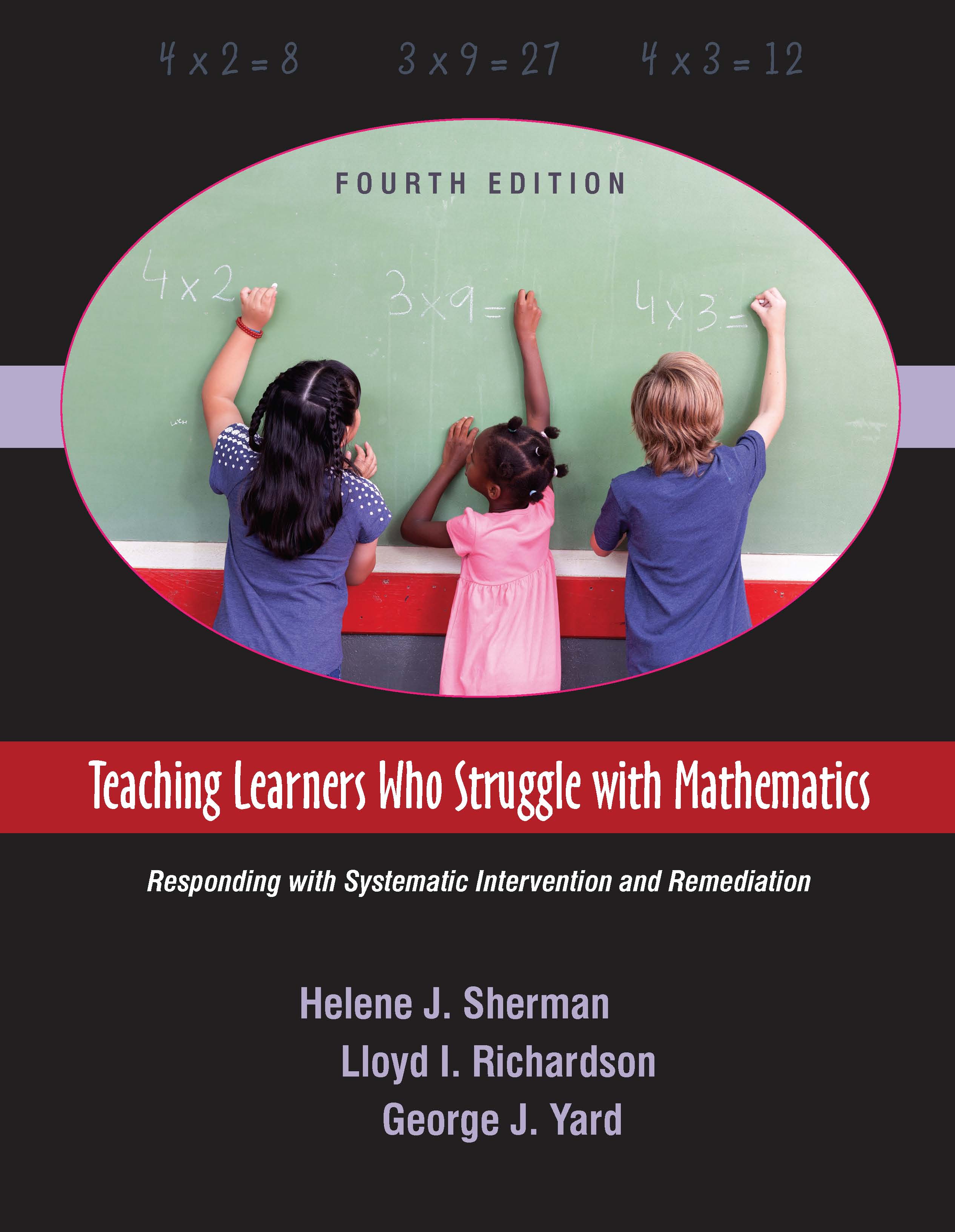"It is very good—full of useful and practical ideas. My students love the content." — Tahsin Khalid, Southeast Missouri State University
"This book is an excellent resource. Often as educators we forget about the struggling learners in math and the math anxious. This book provides many wonderful resources and strategies to reach them." — Joseph M. Furner, Florida Atlantic University
"I have used this book for my math instructional strategies class for several years. Students have told me it is one of the few texts they save as reference for their teaching. The new edition looks great." — Michael Hunter-Bernstein, Portland Community College
"The new ELL chapter in this edition focuses on connecting mathematics to daily life objects; so often what we consider daily life is different from international students. The authors stress the need for 'real world experiences with objects and materials.' Providing 'engaging activities that are memorable, sensible, and stimulating' is absolutely the most effective strategy I've witnessed."— Colin Hobart, English Language Learner Support, Ritenour High School
"This text gives real-life examples of errors students make and how we can intervene in a practical, methodical manner." — Maryjane Burdge, University of Wisconsin, Superior
"This book clearly explains best practices for both math educators and researchers. The response to interventions is extremely useful and practical. I highly recommend this book to all math educators as a resource to help their students grow as mathematicians." —J. Tyler Harger, Educational Mathematics Specialist, Ralph M. Captain Elementary School
"This book is a must-have for all educators. Preservice candidates in our university teacher preparation program actively utilize the math teaching strategies presented in this text to benefit learners of all math ability levels. The myriad creative methods provided can reach even the most math-challenged youngsters. Tab the chapters and keep this book as a useful reference for year round access." —Patricia B. Kopetz, E. Desmond Lee Endowed Professor of Education of Children with Disabilities, University of Missouri–St. Louis

264 pages, $47.95 list
1-4786-3851-6
978-1-4786-3851-3
© 2019
paperback
eBook availability
Teaching Learners Who Struggle with Mathematics
Responding with Systematic Intervention and Remediation
Fourth Edition
Building proficiency in learning mathematics by tailoring instruction to students' specific misconceptions and learning needs is the backbone of this indispensable text, written for K–8 pre- and inservice teachers, as well tutors. An important theme is that long-term retention is based on a strong conceptual foundation of numeracy and on a well-designed learning environment. Each chapter deals with a different mathematics topic, including whole numbers, fractions, decimals, as well as time and money. Chapters also include examples of error patterns and specific, well-defined strategies and activities for diagnosis, prescription, and remediation.
New to this edition is a chapter devoted to English language learners. The complexities of language barriers are delineated along with reasons that students struggle with learning English and mathematics at the same time. An audio file of common mathematics terms translated from English into most-often spoken languages by ELLs can be accessed at www.youareamathperson.com.
Outstanding features:
• Response to Intervention (RTI) model underpins discussions of differentiating instruction.
• Mathematics content reflects components of the Common Core State Standards Initiative for Mathematics and the National Council of Teachers of Mathematics' Principles and Standards for School Mathematics.
• Case studies and student examples promote a sound understanding of learners' varied cognitive, behavioral, and physical needs.
• Discussion questions challenge readers to think more deeply about the application and utility of concepts related to the error patterns.
• Step-by-step directions for interactive instructional classroom games and activities are provided to extend and enrich teaching and learning.
New to this edition is a chapter devoted to English language learners. The complexities of language barriers are delineated along with reasons that students struggle with learning English and mathematics at the same time. An audio file of common mathematics terms translated from English into most-often spoken languages by ELLs can be accessed at www.youareamathperson.com.
Outstanding features:
• Response to Intervention (RTI) model underpins discussions of differentiating instruction.
• Mathematics content reflects components of the Common Core State Standards Initiative for Mathematics and the National Council of Teachers of Mathematics' Principles and Standards for School Mathematics.
• Case studies and student examples promote a sound understanding of learners' varied cognitive, behavioral, and physical needs.
• Discussion questions challenge readers to think more deeply about the application and utility of concepts related to the error patterns.
• Step-by-step directions for interactive instructional classroom games and activities are provided to extend and enrich teaching and learning.
Reactions
1. The Dissimilar Learner and Mathematics Instruction
2. Place Value
3. Addition of Whole Numbers
4. Subtraction of Whole Numbers
5. Multiplication
6. Division
7. Rational Numbers
8. Decimal Fractions
9. Problem Solving
10. Time and Money
11. English Language Learners and Mathematics
Appendix A: Sample DAS and MIP Tables
Appendix B: Suggestions for Planning Academic Content Lessons
2. Place Value
3. Addition of Whole Numbers
4. Subtraction of Whole Numbers
5. Multiplication
6. Division
7. Rational Numbers
8. Decimal Fractions
9. Problem Solving
10. Time and Money
11. English Language Learners and Mathematics
Appendix A: Sample DAS and MIP Tables
Appendix B: Suggestions for Planning Academic Content Lessons